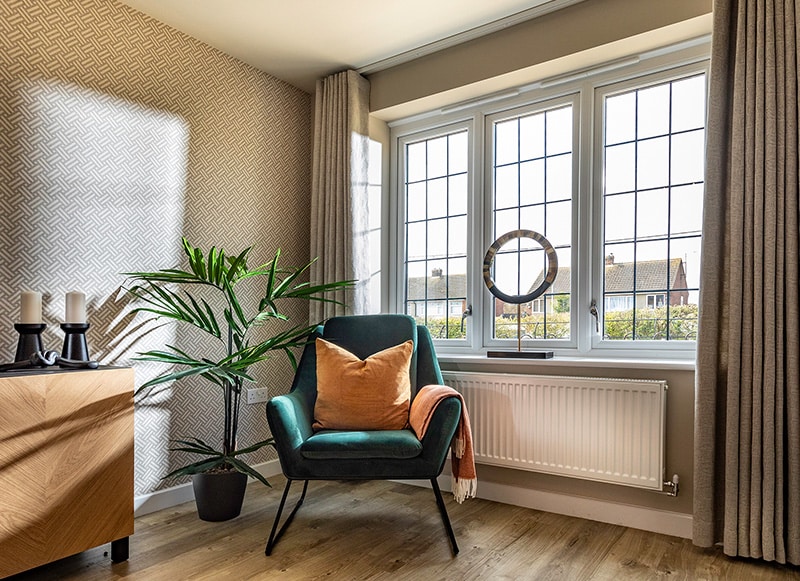As you may be aware, Building Regulations were updated at the end of 2021. The change everyone is talking about is the Part F and background ventilation, specifically, trickle vents. These ventilation requirements have been in force for some time already, they’re just a little different now.
Windows, Doors
When it comes to the air quality of dwellings and other builds, Part F 2021 Ventilation forms part of the wider range of Building Regulations. In general terms, the updated Part F 2021 requests adequate means of ventilation provided in buildings whether by mechanical or natural means.
These Building Regulations exist to ensure buildings have a constant flow of fresh and clean air, protecting a home against moisture, condensation, and mould. These are not just detrimental to the building as well as the health of those who inhabit it.
Part F is the Building Regulations Document which covers the ventilation of a home. The full version of the most recent edition of Part F mentions clarifies the energy efficiency measures that must be carried out in existing builds, as well as Part L Building Regulations for new build projects.
A window with a night latch position is not adequate for background ventilation, because there are risks f draughts, it can be difficult to measure the equivalent area and there may be security issues. There are some alternatives available on the market, for example mechanical ventilation systems in each room, or extractor fan systems. We understand these are unrealistic options and so the default solution when it comes to background ventilation is still trickle vents.
Why Is Ventilation Important?
It is important that Building Regulations Part F are remembered because they are far more important than just a legal hoop to jump through.
Every homeowner wants a well-insulated property with efficient windows that will help their home become easier and most cost effective to run. The airflow and airtightness of a space is an important yet often overlooked factor because everyone is looking to improve insulation.
What Are The New Changes?

A great number of the changes to Part F 2021 covered the ventilation of a modern window. Much like current window vent regulations, if the windows being replaced have background ventilators, the replacement windows should have like for like ventilators. The trickle vents must not be smaller than those in the original window installation and must have either manual or automatic control.
Where existing windows without trickle vents are replaced, they must be no worse ventilated than previously. This regulation covers the following:
- Habitable rooms minimum 8000mm2
- Kitchen minimum 8000mm2
- Bathroom 4000mm2
The Benefits Of Trickle Vents
The air quality of a home is hugely important to the inhabitants of a home. We understand the trade industry isn’t overly keen on trickle vents and some homeowners have bad experiences with bulky, old types that sit on the top of the unit of glazing.
Inputting trickle vents in all window and door profiles adds to the manufacturing cost and selling prices. Trickle vents also add enhanced sightlines, which is a key priority to customers. Customers have expressed concern about acoustic insulation, but a home can be ventilated without the window being opened.
Trickle vents provide effective background ventilation in a home, which may help to minimise the severity of health problems like asthma. This double glazing feature can also help to manage background air levels of pollutants like carbon monoxide and carbon dioxide.

Trickle ventilators enable constant ventilation, even when the window is closed and even locked. The small trickle vent is generally less than 20mm wide, which means the security of a space won’t be compromised. Ventilate a space all day and night, without being concerned about intrusions.
Some homes may have an existing issue with condensation, especially during cold winter months. Replacing older, outdated windows with contemporary double glazed units which include a trickle vent, may help or even resolve the problem. Not just eliminating the condensation problem, it could also potentially minimise mould growth and internal surface damage.
How Does This Affect Installers?
Installers must be professional and ethical, overcoming their own preconceived notions regarding trickle vents. Demonstrating your knowledge and respect for regulations will showcase your business is trustworthy and takes their duty seriously.
This regulation has perhaps come in because the issue of trickle vents has been despite essentially being a component on top of a window or door. Considering the health benefits, condensation benefits and ventilation, trickle vents have more benefits than not.
No matter your personal views on the subject of trickle vent, it is important that those in the trade stay updated on the latest Part F regulations.
For more information, email [email protected], enter our online contact form or call 01933 674880.

